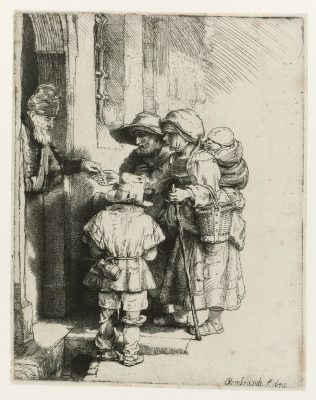International Colloquium at Bader College of Queen’s University, Herstmonceux Castle, East Sussex, UK, 6–9 July 2023. Sponsored by Queen’s University, Kingston, Canada, and Museum het Rembrandthuis, Amsterdam, NL
Organizing Committee:
- Stephanie Dickey, Professor and Bader Chair in Northern Baroque Art, Queen’s University
- Wayne Franits, Distinguished Professor of Art History, Syracuse University
- Elmer Kolfin, Assistant Professor of Art History, University of Amsterdam
- David de Witt, Senior Curator, Museum het Rembrandthuis
Rembrandt’s diverse achievements as painter, draftsman, printmaker, and teacher have inspired a range of exhibitions and publications, but one theme has yet to be fully explored: his relationship to the pictorial category now commonly known as genre (the imagery of everyday life). This colloquium is the first step in a multi-faceted, collaborative project exploring how Rembrandt and his circle contributed to the development of this distinctive aspect of Dutch 17th-century visual culture.
Rembrandt’s direct depictions of daily life consist primarily of drawings and prints, but his keen observations of lived experience infused every aspect of his oeuvre, from historical narratives to tronies and landscapes. Equally intriguing, many of his associates took up genre painting: not only Gerrit Dou and Nicolaes Maes, but also Samuel van Hoogstraten, Gerbrand van den Eeckhout, Philips Koninck, Abraham van Dijck, Aert de Gelder, and others. Their works forge new directions while also reflecting lessons learned, and their collective role in the emergence of genre as a popular and distinctive pictorial category has yet to be clarified.
This colloquium aims to foster analysis and discussion of themes such as the following in relation to paintings, drawings, and prints by Rembrandt and artists in his circle:
- Representations of identity: race, class, gender, life stages
- Responses to social concerns: poverty, disability, urban life
- Iconographic fluidity and hybridity
- Theorizing genre (Van Mander, Hoogstraten, Lairesse, Houbraken)
- Marketing and collecting genre paintings, drawings, and prints in the Dutch Republic
- Naar het leven as practice and pictorial convention
- Literary and theatrical sources and figures
- Studio life / the artist’s studio as performative space
- Depicting social rituals and special events
- Depicting the passions in lived experience
- Pictorial wit and humour
- Individual Rembrandt pupils and their approach to genre imagery
- Creative engagement with predecessors: Bruegel, Dürer, Lucas van Leyden, Callot, Jörg Breu, Hans Sebald Beham, et al.
- Dialogue with contemporaries: Brouwer, Buytewech, Van de Venne; Utrecht Caravaggisti; Leiden fijnschilders, et al.
We welcome approaches that challenge established concepts, beginning with the definition of ‘genre’ itself, and we especially encourage early-career scholars to apply. We expect to convene the colloquium in person at Herstmonceux. Speakers’ costs will be covered, and selected results will be published. The primary goal is to generate lively discussion; papers will be posted and read in advance, with a short précis presented at the event. Presenters can presume a well-informed audience and should write concisely with this in mind (3000 words maximum, attaching 5-8 key images). Some participants may also be invited to contribute to group discussion without making a formal presentation.
To propose a topic, please send a short abstract (200 words) and a CV by November 1, 2022 to: RembrandtGenre@gmail.com.
